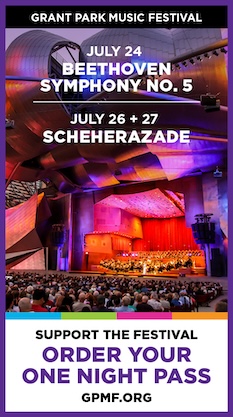Composer Marta Ptaszyńska is feted in style by the Zafa Collective

In an evening that was part concert, part homage, the Zafa Collective presented a program celebrating the work of renowned Polish-American composer Marta Ptaszyńska at the Consulate General of the Republic of Poland Friday night. The Zafa Collective played six pieces by Ptaszyńska, including one world premiere and one American premiere, followed by a Q&A session with the composer and a surprise award ceremony in which she was decorated with the Commander’s Cross of the Republic of Poland.
After a thirty-minute delay while the organizers waited for various dignitaries to arrive, the program began with Joshua Graham of the Zafa Collective and the composer talking about how this concert came to be. In an amusing anecdote, Ptaszyńska said that when she received the email from Graham asking to mount this program, she initially thought it was spam and deleted it. Fortunately, she later retrieved the email, and a friendship formed between them, even leading her to compose a piece in honor of the birth of Graham’s son last November.
The musical portion of the evening began with Ptaszyńska’s Red Rays for flute and piano, which she wrote for the centennial celebration of Marie Curie’s Nobel Prize win in 1911. Ptaszyńska’s training and friendship with Olivier Messiaen were particularly evident in this piece with its use of colorful chord clusters. A synesthete herself, Ptaszyńska often incorporates elements of color in her music. She even bases many of her works on paintings, which she said she sometimes hears in her head as if the music were emanating from the canvas fully formed.
Beginning with declamatory clusters in the upper register of the piano and manic cascading lines in the flute, the piece required rapid-fire articulation and a bevy of extended techniques from flutist Nicole Frankel, as well as muscular cluster chords and dreamy ostinatos from pianist Katherine Peterson. Knowing Curie’s fate, the ending was particularly haunting as the once powerful cluster chords were repeated pianissimo.
One of Ptaszyńska’s most famous works, Graffito for solo marimba, followed. Taking her inspiration from art, Ptaszyńska wrote the piece based on the blocks of color in a painting that was displayed in the room. Joshua Graham wowed with mind-boggling virtuosity in this technically and musically challenging tour de force. His dynamic control was especially notable, as he created musical lines and shapes out of seemingly random processions of notes.
As a percussionist herself, Ptaszyńska tends to incorporate percussive elements in her works, exploring each instrument’s full capacity with extended techniques and unusual articulation. This element was manifest in White Shadows for violin and piano, which required Peterson to hold down the piano strings to produce a plucked effect that created a nice textural interplay with violinist Hannah Christiansen’s pizzicatos and ricochets. The piece alternated between the dreaminess of these plucked sounds and blinding dissonances, which sometimes came across a bit strident in the small room.
Lullaby for Benjamin was a welcome palate cleanser. Written in honor of Graham’s infant son, this piece for alto flute and vibraphone was based on a children’s song Ptaszyńska had written in the 1980s. Though still distinctly in Ptaszyńska’s style, the piece offered a more direct and lyrical melody in the flute over relatively simple arpeggiated accompaniment in the vibraphone. Frankel demonstrated a beauty of tone and lyrical sensitivity that was a balm for the tired ear.
In another piece based on a painting in the room, Gates of Light for cello and piano begins with a meandering cello line that grows out of a pedal note in the piano, evoking the shot of gold that emerges from the center of the painting. The lower registration of the cello provided a welcome grounding to Ptaszyńska’s often nebulous style. Demonstrating great control, cellist Isidora Nojkovic’s placid demeanor belied the difficulty of the music, and Peterson, the unsung hero of the evening with the most notes to learn, played with great virtuosity and sensitivity as ever.
Ptaszyńska takes inspiration not only from visual art but also from poetry, as was the case in Sappho Songs, a five-movement piece for flute and string trio. Again, the piece made frequent use of numerous extended techniques and extra-musical sounds, including tapping on the bodies of the instruments and spoken words (though the words were too quiet and disjointed for the audience to make much sense of them). The ensemble, which included Frankel, Christiansen, Nojkovic, and Teddy Schenkmen on viola, gave a worthy performance of this intricate work, though better intonation would have made the rare moments of unison and homophony more impactful and the dissonances sound more intentional.
Posted in Performances
